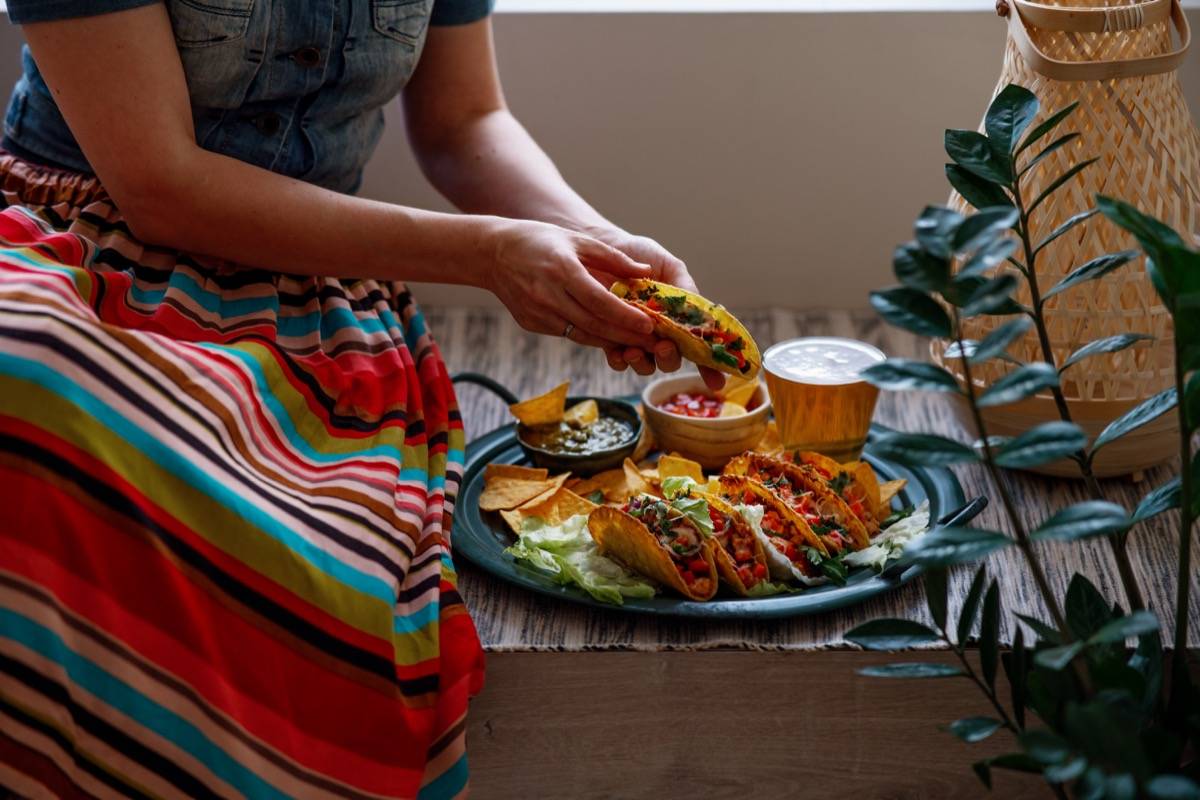Discover the vibrant world of Dominican cuisine, where rich flavors and cultural stories intertwine. Join us on a culinary exploration of this island’s heritage.
What do you think makes a cuisine truly rich and vibrant? Is it the variety of ingredients, the complexity of flavors, or perhaps the traditions and stories that accompany each dish? When it comes to Dominican food, a combination of all these elements creates a culinary experience that resonates with both locals and visitors alike. The exploration of this cuisine reveals not only its sumptuous flavors but also the cultural heritage deeply rooted within it.
The Essence of Dominican Cuisine
Dominican cuisine is a reflection of the island’s diverse history, shaped by Taino, African, and European influences. This fusion has resulted in a unique culinary identity that is both rich in flavor and steeped in tradition. You will find that the essence of Dominican food goes beyond mere sustenance; it is a statement of cultural pride and communal spirit.
Ingredients that Define Dominican Food
The foundation of any great cuisine lies in its ingredients. Dominican food is characterized by a cornucopia of fresh produce, meats, and spices. Here are some staple ingredients that frequently grace Dominican tables:
| Ingredient | Description |
|---|---|
| Rice | A staple food served with almost every meal. |
| Beans | Black beans and kidney beans are popular for their heartiness. |
| Plantains | A versatile fruit often fried, boiled, or baked. |
| Chicken | Commonly used in various dishes, often marinated and grilled. |
| Pork | Frequently served in celebration meals, slow-cooked or roasted. |
| Spices | Garlic, cilantro, oregano, and cumin bring depth to dishes. |
These ingredients are often prepared using techniques passed down through generations, ensuring that authentic flavors are preserved.
The Cultural Significance of Food in the Dominican Republic
In the Dominican Republic, food is more than just a meal; it is a means of celebration, communion, and cultural identity. Family gatherings and community events are often centered around shared meals, showcasing the importance of food in establishing and maintaining connections between individuals.
Traditional Celebrations
Special occasions and holidays in the Dominican Republic feature distinctive dishes that reflect the significance of the event. For example, during Christmas, “Lechón Asado” (roasted pork) takes center stage, often accompanied by dishes like “Arroz con Habichuelas” (rice and beans). Such practices not only highlight the flavors of Dominican cuisine but also facilitate family bonding and unity.
Daily Meals
In the Dominican household, the main meal of the day typically occurs during lunchtime. “La Bandera” is perhaps the most recognized traditional dish, consisting of rice, beans, and chicken, all served with salad and fried plantains. This meal embodies the essence of Dominican culture—simple yet flavorful, and often made for sharing.
Exploring Traditional Dominican Dishes
Each dish in Dominican cuisine tells a story, offering insights into the nation’s history and cultural evolution. Let’s take a closer look at some traditional Dominican dishes that showcase the richness of this vibrant culinary landscape.
Mangu: A Breakfast Staple
Mangu is a beloved breakfast dish made from boiled and mashed green plantains. It often serves as a base for various toppings, such as sautéed onions or fried eggs. You may find it paired with “Los Tres Golpes” (the three hits), which typically includes fried cheese, salami, and eggs. This hearty breakfast not only energizes but also provides a glimpse into the simplicity and comfort found in Dominican cooking.
Sancocho: A Hearty Stew
Sancocho is a traditional stew that reflects the resourcefulness of Dominican cooks. Containing various meats and root vegetables like yucca, potatoes, and plantains, this dish is often served during family gatherings or on special occasions. The complexity of flavors achieved through slow cooking creates a rich broth that warms both body and soul.
Tostones: Fried Plantains
These twice-fried green plantains are a must-try snack or side dish. Crispy on the outside with a tender interior, tostones are typically served with a garlicky dipping sauce. Their preparation is a testament to the Dominican love for simple yet flavorful food that can be enjoyed at any time of day.
Mofongo: A Puerto Rican Legacy
Though originally a Puerto Rican dish, mofongo has also found its place in Dominican cuisine. Made from green plantains that are fried, mashed, and combined with garlic and chicharrón (fried pork skin), it is often served with a hearty broth or stewed meat. Mofongo exemplifies the cross-cultural influences that exist within the Caribbean culinary landscape.
Pasteles en Hoja: A Festive Delight
Often enjoyed during celebrations, pasteles en hoja are similar to tamales. They consist of a mixture of green plantains or yuca, filled with seasoned meat and wrapped in banana leaves, then boiled to perfection. Their intricate preparation demands time and effort, showcasing the communal aspect of cooking in Dominican culture.
The Role of Spices and Seasoning
The bold flavors of Dominican food owe much to its rich array of spices and seasonings. You will find that garlic, cilantro, and oregano are staples that enhance the natural flavors of the ingredients.
Sofrito: The Flavorful Base
An essential component in Dominican cooking, sofrito is a blend of sautéed onions, garlic, bell peppers, and tomatoes. This aromatic mixture serves as the base for many dishes, infusing them with flavor from the very start of the cooking process. Understanding how to make a good sofrito is a crucial skill in any Dominican kitchen.
Sarandear: The Art of Cooking with Spice
Sarandear refers to the practice of adding spices to cooking oil before introducing other ingredients. This technique extracts and amplifies flavors, enhancing the overall taste of the dish. It’s a method that exemplifies the deeper culinary knowledge cultivated within the Dominican community.

The Importance of Cooking Techniques
Dominican cooking techniques are centered around traditional methods that have been passed down through generations, creating a culinary legacy that is cherished by the nation.
Grilling and Roasting
Grilling and roasting are popular methods for preparing meats, especially during celebrations. Dishes like “Pollo a la Brasa” (grilled chicken) or “Cerdo Asado” (roasted pork) highlight the love for charred flavors and the importance of outdoor cooking in Dominican culture.
Stewing and Boiling
Stewing allows for the amalgamation of flavors, as seen in dishes like sancocho. Boiling is similarly significant for preparing staples like mangu and pastel en hoja. These methods ensure that the natural essence of ingredients shines through in every bite.
Frying Techniques
From empanadas to tostones, frying technology plays an integral role in the preparation of delightful snacks and sides. Mastering frying techniques—knowing when to double-fry or the ideal temperature for achieving perfect crispiness—is crucial in Dominican kitchens.
The Influence of Regional Variations
Each region of the Dominican Republic boasts its own culinary specialties, shaped by local ingredients and cultural influences. The diversity in preparation and flavor highlights how geography plays a role in the culinary landscape.
Coastal Cuisine
Coastal areas such as Samana and Puerto Plata are famous for their seafood dishes. Fresh fish, shrimp, and crab find their way into traditional preparations like “Pescado Frito” (fried fish) and “Ceviche.” The proximity to the ocean ensures that seafood is always fresh and abundant.
Interior Flavor Profiles
In-land regions tend to focus on hearty root vegetables and meats, often seen in the preparation of stews and hearty dishes that sustain families working in agriculture. The use of local starchy vegetables like yucca and taro showcases the rich agricultural bounty of the interior.
Urban Culinary Scene
In urban areas such as Santo Domingo, you will discover a fusion of traditional foods with international influences. This evolution has led to innovative practices and the introduction of new flavors. The street food scene, in particular, features an endless array of delicious options that reflect both the past and present of Dominican food culture.
Pairing Dominican Dishes with Beverages
Food and drink are inseparable components of the dining experience. In Dominican culture, traditional beverages enhance the flavors of meals and contribute to the overall dining atmosphere.
Mojito: A Refreshing Classic
A blend of fresh mint, lime, sugar, and rum, the mojito is a popular choice to accompany a meal. Its refreshing nature provides a perfect balance to the savory flavors of Dominican food.
Mama Juana: The Herbal Infusion
Mama juana is a traditional Dominican beverage made from rum, red wine, honey, and an array of local herbs and spices. Often considered an aphrodisiac, this drink is enjoyed during special occasions and celebrations.
Fresca: Fresh Fruit Juice
Juices made from tropical fruits like guava, passion fruit, and pineapple are common accompaniments to Dominican meals. Not only do they offer a refreshing contrast to savory dishes, but they also celebrate the rich agricultural heritage of the islands.
The Experience of Dining in the Dominican Republic
Dining in the Dominican Republic is not just about the food; it encompasses the entire experience. You will find that meals are often communal and celebratory, emphasizing social bonds and cultural traditions.
Family Gatherings
Family plays a crucial role in Dominican culture. Meals are often prepared with love and shared among family members, showcasing the importance of unity and connection. The act of cooking together often transforms into joyful celebrations filled with laughter and stories.
Festivales and Street Food Culture
Street food is an integral part of Dominican life, with vendors serving up delicious snacks like empanadas, salami sandwiches, and fried plantains. These casual meals exemplify the spirit of community and make for an enjoyable way to experience local flavors.
Conclusion: A Culinary Journey Worth Experiencing
Dominican food embodies the spirit, history, and culture of the Dominican Republic. It is a culinary journey filled with flavors that resonate deeply with those who partake in it, telling a story of resilience, connection, and pride. Each dish, prepared with care and tradition, invites you to experience the essence of a vibrant island culture through the lens of its rich culinary offerings. By embracing and celebrating Dominican cuisine, you not only savor its flavors but also become part of a shared heritage that continues to thrive.


